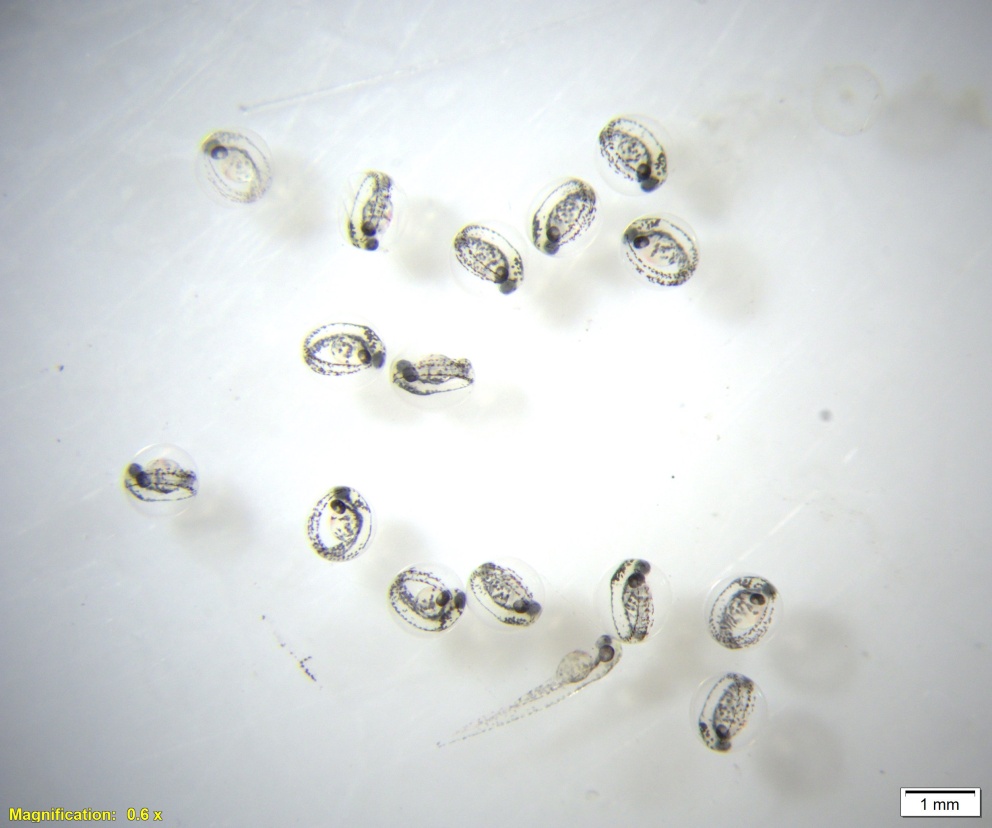Swimming Towards Discovery

Depicted in this image are zebrafish embryos at just two days post fertilization, nearly ready to hatch. Zebrafish (Danio rerio) have become a popular model organism for scientific research across fields. Despite their tiny size, zebrafish possess many traits that make them an inspiring animal model. They have a very short life cycle, with a generation time of only a few months, allowing researchers to quickly study the effects of genetic or environmental factors across multiple generations. They are also transparent at the embryonic and larval stages, enabling easy observation of internal organs and structures, making them particularly useful for studying early developmental processes and developmental disorders. As well, zebrafish share many genetic similarities with humans. As a result, insights gained from studying zebrafish have important implications for human health and disease, from cancer to heart disease to neurodegenerative disorders. In my research, I use the zebrafish model to study the developmental pathology of swim bladder malformation, which has implications for expanding our understanding of this important and valuable organism.